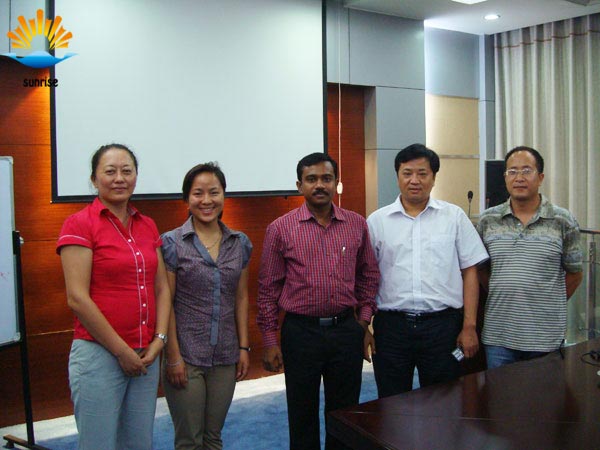
Product List
Success Case
Contact Us
- 0086 371 63838939
- 0086 371 63835539
- sales@sunriserefr.com
- tkfanyi
- No.36 Fengchan Road, Zhengzhou City

News
Brief Introduction of Fused Zirconia Corundum Brick
- More related products
- Fused Cast AZS Block
- Fused Cast Alumina Block
- Fused Cast High Zirconia Block
- Fused Cast Skid Rail Block
Fused zircon corundum bricks can also be called corundum-clinic zircon products. The main chemical composition of Al2O3 is 50% to 70%, ZrO2 is 20% to 40%, and the rest is SiO2. The main mineral composition is zirconia (ZrO2), corundum (α-Al2O3) and glass phase. Oblique zircon crystals form the backbone of the brick body. ZrO2 has a high melting point (2715 ° C), good chemical stability, and strong resistance to acidic and alkaline media, especially the resistance to glass liquid erosion.

With the increase of the content of ZrO2, the performance of fused zirconium corundum bricks also improves. Generally, zirconium corundum bricks are divided into several levels according to the amount of ZrO2, such as 33%, 36%, and 41%. 30%, 40X, 50% levels are not uniform. At present, products containing 33% of zirconium are used more frequently, with a density of 3.65-3.7g / cm3, and the highest use temperature is about 1700 ° C.
Fused zircon corundum bricks are used in industrial furnaces such as glass melting furnaces, and the parts used in glass melting furnaces are masonry upper pool walls, small furnace grate, small furnace stacks, tongue grate and chest wall.
Pay attention to the following issues during use.
(1) Irregular changes in thermal expansion The expansion curve of fused zirconium corundum bricks has an abnormality around 1000 ° C. The ZrO2 crystals in them undergo reversible crystal transformation and have large volume changes. Therefore, products containing ZrO2 are not suitable There are often sharp fluctuations in temperature around 1000 ° C. When baking in an oven, the temperature change should not be too large at 900 ~ 1150 ℃, generally it should not exceed 15 ℃ / h, and a steady temperature increase is required. To prevent cold wind from blowing in some areas, other bricks should be used to prevent cracking.
(2) Shrinkage is often found at the casting port during shrinkage casting. Here, there are many air holes in the brick body and the density is poor. Therefore, when the glass wall of the glass-melting part is pooled, the shrinkage holes are oriented toward the kiln. With the mouth facing outward, when the brick body is eroded to a very thin thickness, it will cause the accident of leaking glass liquid. When used in the flame space of the upper part of the kiln, the service life is very long, and the problem of glass running will not occur. Therefore, the casting port is used outwards to extend the service life.
(3) Eutectic fused zirconium corundum bricks and clay refractory bricks will be co-melted at a high temperature of 1300 ° C. Therefore, when selecting refractory materials, avoid contacting two refractory materials with severe eutectic phenomena. Building, such as silicon brick under the fused zirconium alumina brick, *** is susceptible to erosion by the fused zirconium alumina brick.
Fused zirconia corundum products for glass kiln are divided into 3 grades according to their zirconia content. AZS-33: the zirconia content of the product is 33%; AZS-36: the zirconia content of the product is 36%; AZS-41: the zirconia content of the product is 41%. Products are divided into Y (first-class products) and H (qualified products) according to their physical and chemical indicators, size tolerances and appearance indicators.
Leave Message
For more information on any of our products please get in touch using the form below. One of our sales team will respond to your enquiry as soon as possible.

Copyright © 2014 Zhengzhou Sunrise Refractory Co., Ltd. Site Index Product Index












